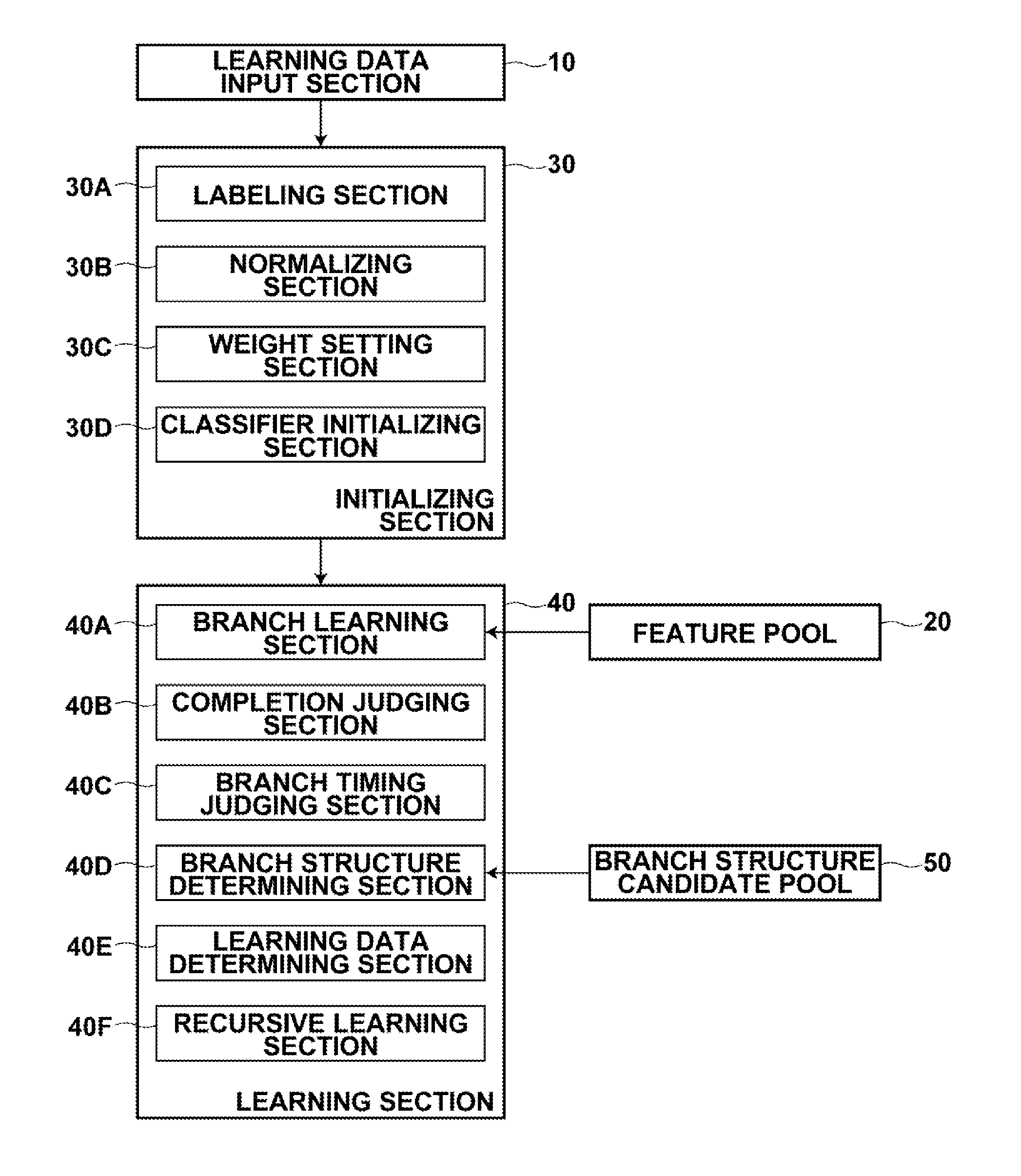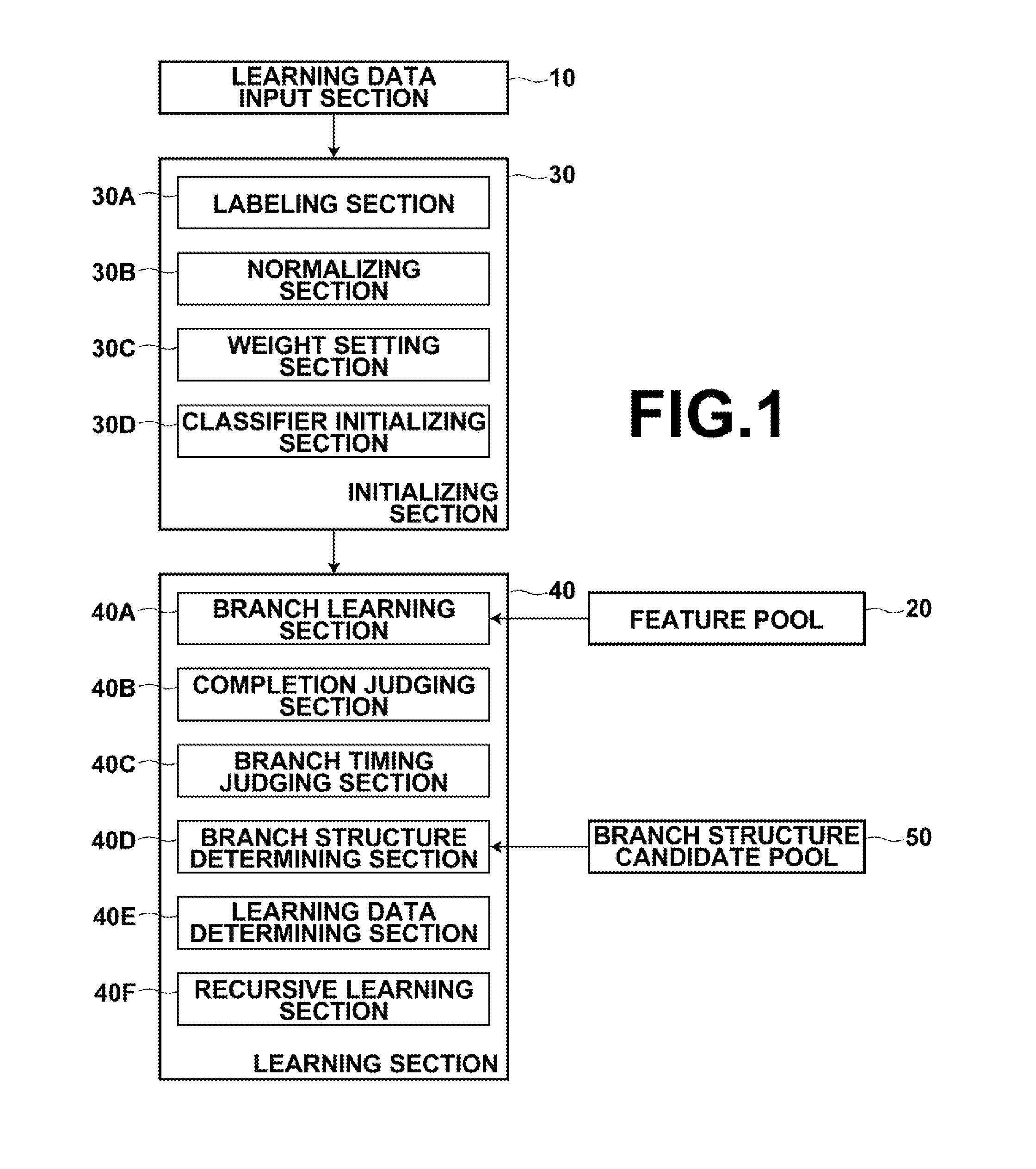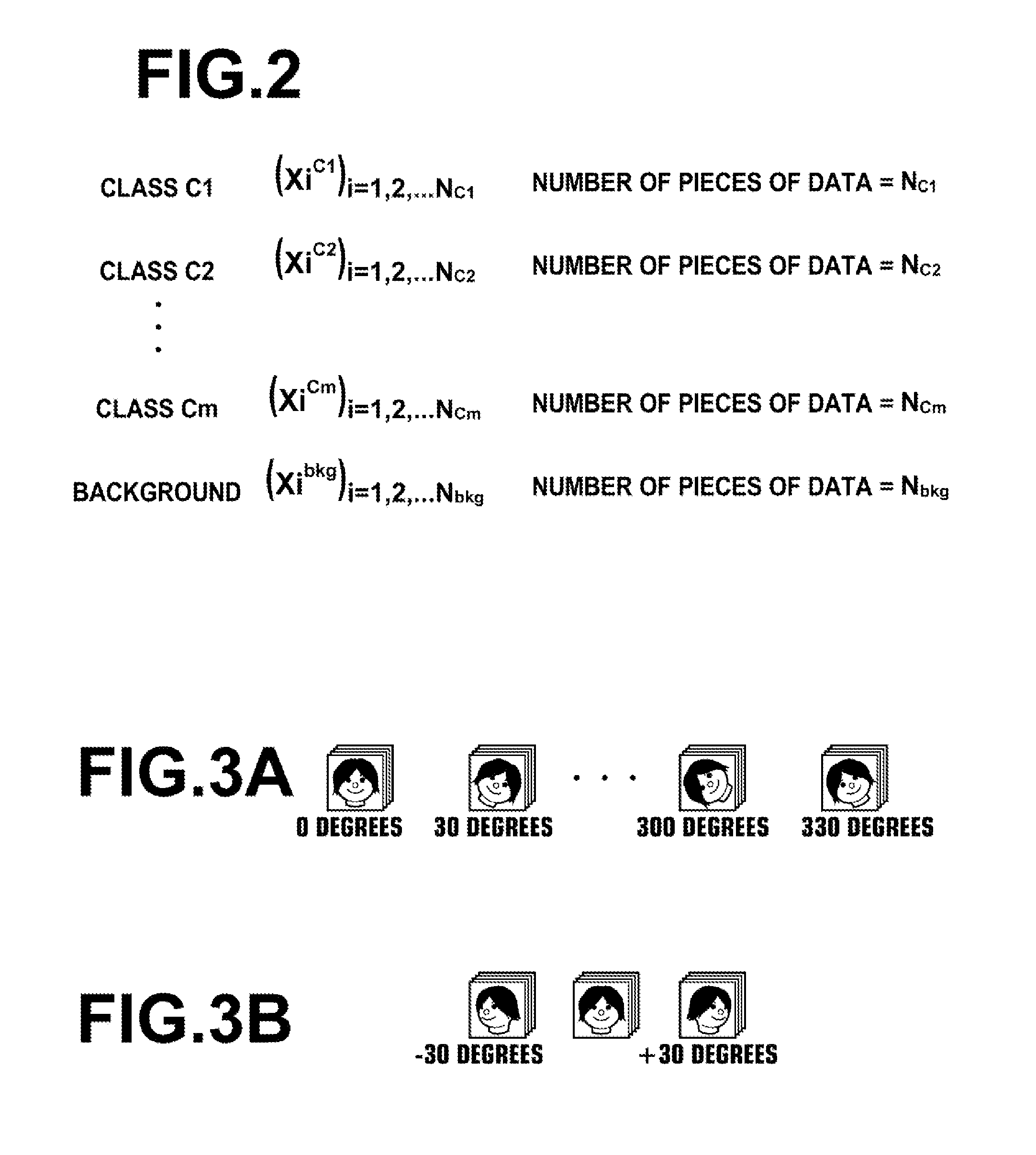Method, apparatus, and program for generating classifiers
a classifier and program technology, applied in the field of classifier generating apparatus and classifier generating method, can solve the problems of deteriorating detection speed, detection accuracy, and difficulty in realizing a general use classifier capable of detecting faces in all orientations, so as to improve the converging properties of learning, the effect of high speed
- Summary
- Abstract
- Description
- Claims
- Application Information
AI Technical Summary
Benefits of technology
Problems solved by technology
Method used
Image
Examples
Embodiment Construction
[0067]Hereinafter, embodiments of the present invention will be described with reference to the attached drawings. FIG. 1 is a block diagram that illustrates the schematic structure of a classifier generating apparatus 1 according to an embodiment of the present invention. As illustrated in FIG. 1, the classifier generating apparatus 1 of the present invention is equipped with: a learning data input section 10; a feature pool 20; an initializing section 30; a learning section 40; and a branching structure candidate pool 50.
[0068]The learning data input section 10 inputs learning data to be utilized for classifier learning into the classifier generating apparatus 1. Here, the classifiers which are generated by the present embodiment are those that perform multi class classification. For example, in the case that the classification target object is a face, the classifiers are those that perform multi class classification to classify faces which have different orientations along the pl...
PUM
 Login to View More
Login to View More Abstract
Description
Claims
Application Information
 Login to View More
Login to View More - R&D
- Intellectual Property
- Life Sciences
- Materials
- Tech Scout
- Unparalleled Data Quality
- Higher Quality Content
- 60% Fewer Hallucinations
Browse by: Latest US Patents, China's latest patents, Technical Efficacy Thesaurus, Application Domain, Technology Topic, Popular Technical Reports.
© 2025 PatSnap. All rights reserved.Legal|Privacy policy|Modern Slavery Act Transparency Statement|Sitemap|About US| Contact US: help@patsnap.com



